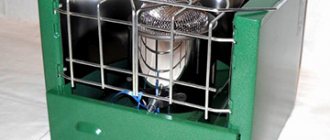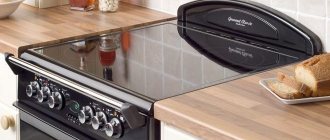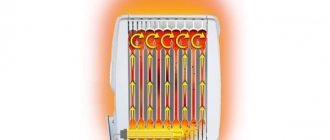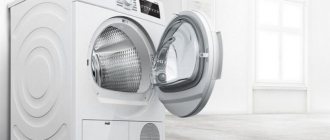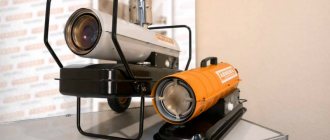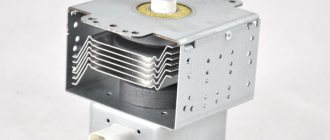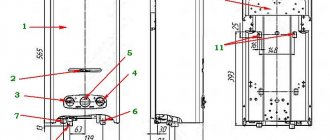Advanced air multipliers are gaining immense popularity in the home appliance market. Devices without blades are easy to use, highly efficient and economical. A modern device causes a lot of controversy among potential buyers with its design and functionality.
1
History of creation
The bladeless fan looks very different from the product we are used to. The first device appeared in 2009 . thanks to creator James Dyson. He devoted almost 30 years to work aimed at improving many types of household appliances. The English developer managed to come up with many unusual, useful and necessary inventions.
Many countries bought a patent for the production of these new products. Manufacturers are attracted not only by the usefulness of the devices, but also by the improved design and functionality of the equipment. When developing a special fan without blades, more than 4 years were spent modeling a ring capable of efficiently passing air flows, multiplying it many times over.
The device quickly gained popularity and soon after its appearance on the market similar fans began to be sold. Now there are even more budget options from Chinese manufacturers.
How does an air cooled chiller work?
This is interesting: How to wash tulle in a washing machine so that it is snow-white
2
Fan device
The operation of this device is very similar to the operation of a jet engine. A high-speed turbine with a 40 kW engine, which are connected by a common shaft, is mounted at its base. Only two main parts (base, ring diffuser) are included in the bladeless fan. The principle of operation is based on the operation of a turbine, which ensures the flow of air into the device.
The engine of the device is equipped with a Heimholtz chamber , which captures and dissipates operating noise. The body of the device has many holes that suck in air. The device's ring diffuser is created according to the rules of aerodynamics. There is a special slot on the surface on the inside. With its help, air is pumped into the working area.
The cross-section of the ring has the shape of a drop, since this shape is ideal from an aerodynamic point of view. It minimizes resistance around itself, which prevents the formation of turbulence.
Design and principle of operation of fire sprinkler systems
2.1
Principle of operation
The bladeless fan used the technical principle of a turbine. Located at the base of the device, the turbine sucks in air from outside through the openings of the housing and supplies it to an annular diffuser with a very narrow slot. Its specially adapted profile works to increase the efficiency of the pressure difference. This causes the air to be pushed out with force due to the aerodynamic effect.
The resulting flow is immediately filled with air surrounding the diffuser ring. Due to this, the air flow increases by 15-20 times for a fan without blades. The operating principle of such a device is called an “air multiplier”. This allowed us to obtain a safe and economical design.
It creates a dense monotonous flow that refreshes the air masses. During operation, it functions unobtrusively. The device is almost silent; It's very interesting to watch how a fan works without blades. Unlike a conventional device, it does not create a draft and does not cause discomfort.
How does a silent version of an exhaust fan work?
Rating of the best fans without blades
Budget models
| Model | Characteristics |
| Flextron FB1011 Desktop device with 35 W power. The modern device is equipped with the option of tilting the body by 10 degrees, which allows you to adjust the area over which the flow is distributed. Original design with an oval shape, made of high-quality materials that will last a long service life. Smooth speed adjustment is carried out using mechanical control. There is a function for rotating the working part up to 90 degrees. Cost 2,900 rub. Advantages:
Disadvantages: none identified. | |
| Roward 10WS Reliable equipment made of high-quality plastic will provide air cooling in a short time. The unit is adjusted using a remote control, which is certainly convenient and practical. The tilt of the body part is allowed up to 15 degrees, and the rotation angle is equal to 90 degrees. Bladeless desktop equipment will become an indispensable assistant in the office. Approximate price 2,500 rub. Advantages:
Cons: low power. | |
| SUPRA VB-1001 The desktop device is compact in size and can be easily installed in a convenient location. The rotorless device operates in three speeds, with tilt adjustment. Equipped with a rotating system, which is designed to cover a larger area of the room. The unit will have a long service life due to high-quality assembly. Cost from 3,400 rub. Pros:
Disadvantages: no timer. |
Middle price segment
| Model | Characteristics |
| Dyson AM01 Desk Fan 10 inch The original bladeless fan with a power of 40 W will quickly provide the necessary climate in the room. A safe device and easy operation are provided for complete comfort in use. Such models can be installed in homes where there are small children, because the absence of rotating blades will not harm them. The tabletop type with electronic adjustment is made of durable plastic. The air multiplier has three keys, through which all the work is carried out. Cost 14,300 rub. Advantages:
Cons: quite high price. | |
| Clever & Clean FF-01 The tabletop unit with hanging mount has an original design. Modern climate control equipment has a tilt angle of 360 degrees and a rotation angle of 90 degrees. Advanced functionality will exceed all expectations. Effective cooling occurs around the entire perimeter of the room. It is controlled using the remote control that comes with the kit. The noise level reaches 55 dB. Price from 7,500 rub. Advantages:
Disadvantages: too noisy. | |
| Dyson AM06 25 The device allows programming of working hours, which is important for comfortable use. The air strike is carried out at 3 meters, there is an option to turn and smoothly switch speeds. The built-in timer allows the device to operate for 9 hours. Manipulations are carried out using the remote control, so it is not necessary to get up to switch the required air supply mode. The cost of the equipment is 19,200 rubles. Pros:
Cons: high price. |
Premium models
| Model | Characteristics |
| Dyson AM02 Tower Fan Using the remote control, you can adjust the airflow in the desired direction. An even air flow is distributed throughout the room. You can easily adjust the air supply power. An interesting design will dilute a boring interior and bring brightness to everyday life. Equipment price 19,700 rub. Advantages:
Flaws:
| |
| Dyson AM07 Floor-standing equipment with remote control control will be the best assistant in cooling your apartment and office. The stable design quickly creates the required climatic conditions. Additional features: sleep mode timer and magnetic storage of the remote control on the surface of the case. The shutdown delay time ranges from 9 to 15 minutes. Cost 25,900 rub. Advantages:
Cons: overpriced. | |
| Dyson AM08 The floor-standing type of the device with a stable design is made with a power of 60 W. By rotating the housing part, the room is cooled evenly. The unique appearance is suitable for any office or apartment interior. The tilt angle is 20 degrees, and the height of the device is adjustable. Timer with a maximum setting time of up to 9 hours. Electronic control is carried out by remote control DU . Approximate cost 31,700 rub. Pros:
Flaws:
|
Classification of fans according to basic parameters
Fans are mechanical devices designed to move, supply or exhaust air and gas masses. Air circulation occurs due to the pressure difference between the inlet and outlet channels of the ventilation unit.
Fans are used everywhere. The devices are indispensable when arranging the supply and exhaust ventilation complex of a building, blowing working elements in air conditioners and heating devices.
The fans are designed to work with gases whose compression ratio does not exceed 1.15. At the same time, the difference in pressure indicators at the inlet/outlet is limited to 15 kPa - for a larger value, a compressor is used
The general classification of ventilation units is based on different parameters.
Among the main gradation criteria are:
- design and operating principle of the device;
- purpose and operating conditions of the fan;
- installation method;
- methods for connecting the device to the electric motor;
- technical features: IP degree of protection, generated pressure, power consumption, rotation speed, efficiency and acoustic pressure level.
Based on the type of design, there are five modifications of fans: axial, centrifugal, diagonal, diametrical and bladeless.
Diagonal and diametrical units are considered a variation of two main groups of ventilation units: axial and centrifugal. New bladeless products are fundamentally different from their counterparts
Based on operating conditions, the following types of gas blowing machines are divided:
- general use appliances;
- fans for special purposes.
The first group includes units designed to work with air and inactive gas flows, the temperature of which does not exceed +50°C. The second group includes special equipment: heat-resistant, explosion-proof, dust-proof, corrosion-resistant and smoke-removing.
According to the installation method, they are distinguished:
- standard – installation is carried out on a support;
- roof - installation on the roof of a building;
- duct – placed inside the ventilation duct;
- multi-zone - models designed for connection to several air channels.
Electric motors are used to drive the ventilation unit.
There are several possible ways to couple the engine to the impeller:
- direct connection;
- V-belt transmission;
- stepless hitch.
After determining the appropriate type of fan, a model with optimal technical characteristics is selected.
The service area, installation location, permissible noise level, room humidity, and the need to protect the device from foreign objects are taken into account.
Advantages and disadvantages
Bladeless fans, like other models, have a number of advantages and disadvantages. Advantages:
- there are no exposed moving parts, this ensures the safety of children and animals;
- do not dry out the air;
- do not require maintenance.
Flaws:
- noise during operation is about 40 decibels;
- relatively high price;
- fragile body design.
3
Main advantages
A bladeless device has many advantages over a conventional fan. It is ideal for use in home and office spaces. The devices have the following positive characteristics:
- are silent and do not create vibration;
- there are no drafts during operation, they do not accumulate dust, since they do not have parts for this, which makes a fan without blades hygienic;
- horizontal and vertical rotation volume makes them very convenient to use;
- the devices are quite stable;
- due to the absence of external moving parts, they are considered safe, which eliminates injuries;
- low energy consumption, because they consume much less than blade fans;
- stand out for their modern design.
All of these devices are equipped with remote control, which makes them very convenient to use. The control panels are attached to the body so that it is convenient to operate and not lost. Almost all remote controls are equipped with various options where you can select the desired operating mode. This product helps you get fresh air flow at home and at work without noise or discomfort.
In addition to its advantages, the fan has its disadvantages: if you buy a more powerful device, it makes noise during operation, which is very noticeable at high speeds. The price of modern models is high. If you buy cheaper analogues from Chinese manufacturers, they are unstable and creaky.
Manufacturers of bladeless fans are constantly working on existing shortcomings. They periodically improve new models, taking into account consumer feedback and suggestions.
This is interesting: How to remove gouache from clothes: the most effective home methods
Advantages and disadvantages
Having examined the structure of air multipliers, we can move on to analyzing their advantages and disadvantages. Let's start with the first one. Advantages:
- Of course, this is safety. The absence of blades allows you to stick your fingers into the working area of a functioning device with impunity; this will be especially appreciated by those who have small children.
- Now, to remove dust, just swipe with a cloth, there is no need to disassemble the household appliance.
Safety and ease of maintenance are only part of the benefits of the Dyson Air Multiplier - The design of the turbine engine uses neodymium magnets, which made it possible to minimize the power plant and make it relatively silent.
- Energy savings, the maximum power of the device is 40 W, but in this mode the device is rarely used, so normal operation occurs at a level of 15-20 W.
- Attractive design that fits perfectly into a modern interior.
- Smooth control of air flow force and direction.
Unfortunately, this device also has disadvantages that significantly affect consumer demand:
- The high cost of original models, it can reach up to 20 thousand rubles or more, which is comparable to the purchase and installation of an inexpensive split system. However, you can put up with this price if the bladeless fan has the functions of heating and cooling the air. Note that Chinese analogues are significantly cheaper, some even by an order of magnitude, but, as already described above, they are less efficient.
- Despite the fact that the fan power plant is low-noise, during operation this device emits a characteristic hum, reminiscent of the operation of an aircraft turbine. Moreover, at maximum power the noise level can reach 60 decibels, which is quite a lot, since an hour is enough for it to give you a headache. True, in this mode the device creates such a strong air flow that discomfort occurs, so the maximum level of operation is practically not used. In normal mode, the device makes much less noise.
- The 15-fold increase in flow stated in the advertisement is technically correct, but there is a certain nuance. This value is typical for the maximum mode, which is practically not used.
Care and maintenance
Bladeless fans are durable and do not require special care or maintenance. Like all household electrical appliances, they should not be turned on if moisture gets inside the housing or in rooms with a relative humidity above 85%. Before turning it on for the first time in a new place, you need to check the voltage in the outlet (220V). The product can only be repaired by qualified personnel with a clearance group of at least IV. Filling the internal tank with water can only be done after disconnecting the fan from the mains. If the device has been dropped from a great height, it must be inspected by a specialist before turning it on. This must be done even when the fan is working after a fall and there are no visible cracks or chips on the case.
Work order
Preparing plastic pipes
We take a piece of PVC pipe with a diameter of 150 mm and end it, aligning the edges. We mark a fragment about 100 mm long and make a cut with a miter saw or angle grinder.
The edges of all pipes must be sanded to avoid burrs, unevenness and to improve the fit of the edges for adhesive joints.
The next step is to select a plastic container that will fit tightly onto our section of pipe. We cut off the bottom of it with a painting knife, and use superglue to secure it to the top of the pipe.
The basic plastic parts are ready. You can check how they will fit together by placing them in their places.
Unevenness in a curved cut can be smoothed out with sandpaper, removing burrs at the same time.
Using a hole saw with a diameter of 50-60mm, a drill or a screwdriver, we make a through hole in the middle of the largest pipe. This will allow air to flow through the base and into our frame. We fix our base with superglue.
In order to close the fan frame, which consists of two pipe sections of different diameters, a plug is glued to one end of the smaller one. We make it from a sheet of plexiglass or blue plexiglass.
Having first marked the larger circle and then the smaller one, we cut off the plug ring.
Now it can be attached with superglue to the smaller frame pipe.
Using white spray paint and electrical tape as masking tape for plexiglass, we paint the plastic parts of our fan.
We fix both pipes of our frame with superglue.
Mysterious "air multiplier"
The bladeless fan was a bold step in the evolution of climate-controlled home appliances. The honor of the invention belongs to the Englishman James Dyson, an engineer and industrialist, the author of a huge number of non-standard discoveries in solving everyday everyday problems.
Watching how the blast of air from the slot of a hand dryer captured nearby layers of air and pulled them into its flow, he became fascinated with the idea of creating a bladeless fan. A long path of research and development, intellectual and financial expenditures was passed before the device appeared on the shelves and fascinated everyone with its mystery.
Nowadays, the assortment of counters in household appliance stores represents a whole assortment chain of bladeless fans. They differ in power, purpose, design, and there are models to suit every taste and budget. Devices from Dyson cost up to 25,000 rubles, economic analogues from other companies cost up to 2,500 rubles. There are table and floor designs, models with a diffuser in the form of a simple ring, in the shape of a heart, an apple, a diamond, or in the form of the contours of funny children's toys. Models are equipped with a remote control.
Which manufacturer and which type is better to choose: TOP-3
Among the above models, some can be identified as the best.
They have improved technical characteristics, which is why the price is higher than that of other devices. Of the floor-standing models, the DYSON AMO8 fan attracts attention. It has increased data compared to other devices in this series
For example, it consumes 15% less electricity, but the air stream is more powerful and uniform. Quickly cools the air in the room. Price - 24579 rubles. The compact, stable ORION OR DS01 represents an excellent budget model of table fans. High-quality plastic, the ability to rotate and tilt with a slight movement, and the absence of vibration are the undoubted advantages of this device. Price - 2222 rubles. DYSON AMO6 30 is a model characterized by high quality workmanship. Devices from the English manufacturer are at the top of the popularity rating. Low noise level, reduced power consumption, remote control with customization options - all these advantages lead to a high cost. Price - 24990 rubles.
Design features
A fan without blades consists of two main parts:
- grounds;
- ring diffuser.
A high-speed turbine is mounted into the base of the device, equipped with a 40 W engine, with which it has a common shaft. The turbine provides air movement in the device. The engine is equipped with a Hemholtz chamber to capture and dissipate engine noise. The base housing of the device has many holes for air intake.
The fan ring diffuser is made according to the laws of aerodynamics. There is a special slot in the ring on its inner surface through which air is pumped into the working surface. The cross section of the diffuser ring is a drop. This shape is aerodynamically ideal from the point of view of minimizing drag; turbulence zones do not form around it.
Stylish bladeless table fan Dyson Air Multiplier 01
The device consumes extremely little energy, as it is driven by a turbine with a power of only 40 W. The diameter of the air ring is only 30 cm. Despite this, the installation emits about 400 liters of air per second at full power. The height of the device is 50 cm.
At the bottom of the device there is a smooth rheostat-type speed control knob, which allows you to smoothly adjust the force of the air stream. The Dyson Air Multiplier 01 is equipped with a tilt and frame locking device, which makes it quite easy to use. The “Air Multiplier” is quite unpretentious and will not cause any difficulties with cleaning and maintenance, so it will certainly attract the attention of domestic consumers. The cost of the device in Moscow stores is about 235 USD.
Design and principle of operation
In 2009, J. Dyson presented the world with his own fan development. The design feature was the absence of blades, which, however, did not prevent the device from creating a stable air flow. Moreover, the volume of air at the outlet exceeded that entering the turbine by one or two orders of magnitude. Do you think it's magic? No, everything is much more serious - aerodynamics.
It's all about the profile of the ring; it is given a special shape.
Bladeless Fan Ring Profile
Thanks to this, the air coming out of the holes is focused in such a way that a low pressure zone is formed in front of the ring (highlighted by a red oval in Fig. 3).
Rice. 3. Aerodynamic modeling of the operation of the Dyson Air Multiplier
Since such an area is surrounded in front and on the sides by increased pressure, air is drawn in from the back of the ring, forming a steady directed flow.
Note that it took Dyson about four years to compile a mathematical model of the profile that would allow achieving maximum effect and finalizing the technology. Most Chinese analogues of its device cannot produce even half the power of the original device. The inventor patented the design, in particular, the profile of the ring and the structure of the turbine that pumps air, so in order to make full-fledged copies it is necessary to purchase production rights from the author.
A few words about creating a bladeless fan
The model, which is radically different in appearance from other types of fans familiar to many since childhood, was invented in 2009. Its creator is James Dyson.
He worked for about 30 years on options for improving the vacuum cleaner and other household and industrial equipment. This English developer came up with many interesting and useful inventions, the patents for which were sold to different countries around the world.
Bladeless models allow you to relax peacefully, enjoying the coolness and without worrying that one of your pets or children will get hurt if they get caught in the fan blades
All of his developments are distinguished by exquisite design and improved functionality. Mr. Dyson, working to improve the hygienic hand dryer, took the principle of its operation as a basis for his new invention. So, in 2009, a special fan appeared that did not have blades.
J. Dyson's leading engineers spent about 4 years simulating a fan ring that could most effectively pass air through itself, multiplying it many times over.
Already in 2010, a bladeless device from Dyson was sold in the inventor’s homeland for 199 British pounds. This price can hardly be called popular, but there were many who wanted to acquire an innovative fan.
Therefore, now on the market you can find similar equipment from various manufacturers, including budget Chinese models.
In the near future, users will be able to try a new product – a ceiling version of a bladeless fan. This is Exhale Fans equipment designed by Nick Heiner
Comparative Advantage
These fans:
- comfortable, as they are silent and do not create vibration;
- hygienic, as they have a soft, pleasant air flow and do not create drafts, are easy to clean, and do not have parts that accumulate dust;
- convenient, as they have sufficient volume of vertical and horizontal rotation;
- stable, since the heaviest part of the device is located at its base;
- safe, as they do not have external moving parts that pose a threat in terms of household and child injuries;
- economical, despite the innovative advantages that a fan without blades has, its price is equivalent to the price of outdated bladed models;
- characterized by low energy consumption, the device uses 98% less energy compared to blade fans;
- aesthetically pleasing, as they have a modern design.
The bladeless fan is ideal for use at home and in the office. Modern design, comfortable air flow, noiselessness and absence of vibration, the possibility of remote control and the presence of a range of modes, efficiency, economy, hygiene and safety - all these characteristics are successfully combined by an innovative fan without blades. Reviews of its use eloquently state that it helps make the owner’s rest complete and his work productive.
DIY bladeless device
The question of creating a fan without blades with your own hands has visited many craftsmen. During the experiments, home craftsmen obtained many working homemade products.
Option #1: product made from plastic buckets
To make the device, use a plastic container, a simple fan and a glue gun.
From simple and affordable materials, you can build a homemade fan without blades in a couple of hours.
For example, you can take:
- 2 plastic buckets with a volume of 5 and 10 liters;
- PVC pipe 110;
- distribution tee;
- stub.
First, you need to cut a piece 15 cm long from the pipe. Then, in a 10-liter bucket, make a hole on the side exactly the same size as the outer diameter of the pipe.
Using a glue gun, you should carefully and carefully connect these 2 parts together.
The next step is to take a 5 liter bucket and cut 3 cm from the top edge. We still have to cut a hole in the bottom, the diameter of which is 2 cm smaller than the bottom of the bucket itself. You also need to make a hole of the same size in the bottom of the larger bucket and connect them together with a glue gun. This is a homemade blower.
Now we have to assemble a housing with a motor, the role of which will be played by an axial fan. To do this, put the plug on the side pipe of the tee, having previously applied an adhesive layer there.
It is better to leave a small gap of 1.5-2 cm to allow air access. Then you need to put the PVC pipe on one of the tee pipes and mark the boundary - this will be a segment of about 10 cm that needs to be cut.
Place the cut piece into this pipe and make a through hole 5 cm long from the edge
It is here that an axial electric fan of the required diameter will be installed, and a wire will be brought out into the hole to be connected to the electrical network.
To give the finished homemade product an aesthetic appearance, all parts can be painted in one color with spray enamel. For example, in white, beige or blue. The case is ready to connect to the network.
All that remains is to place a homemade blower from 2 buckets on top and turn on the fan
If you place a container with ice inside the case, the homemade product will act as an air conditioner. And by placing a piece of cotton wool with 5-7 drops of essential oil, you can fill the entire room with a pleasant aroma.
Option #2: fan made of plastic pipes
The prototype of the second option was a bladeless device from the Dyson . The body and technical part were assembled by a home craftsman according to the scheme of a finished factory-produced product.
Let’s start building a homemade product useful in everyday life with the body:
The case is ready, now it should be equipped with technical stuffing:
The assembly of the device is almost complete. All that remains is to cut and glue the bottom to the base of the stand. And it’s better to glue four round flat legs to the bottom, cut from a piece of rubber 4-5 mm thick.
Fan without blades
The original device is gradually gaining momentum among users who are already convinced that the unit works effectively.
Fan without blades: operating principle
Based on the appearance of the device, it is not immediately possible to understand its purpose. A fairly simple design effectively transmits powerful air flow. The air moves through the air intake, followed by exit from the opposite side at high speeds. An aerodynamic device is designed to create low pressure in order to roll out air flows at the inlet. The built-in turbine is used to quickly change air masses, so the equipment is more efficient than a conventional fan.
Operating principle of a fan without blades
This type of device passes approximately 500 liters of air per second, and the supply is evenly distributed throughout the room. The creation of models was based on the operating principle of aircraft jet engines.
Healthy! Modern units do not take up much space in the room, but at the same time efficiently blow the room with a uniform air supply. They are easy to use; just read the instructions to fully understand the operating principle of the device.
Design
With the help of innovative technologies, the device is produced with various functionality. The design of different models may differ slightly, but all copies consist of the following parts:
- Frame;
- Blower element;
- Control Panel.
Fan design
On the body there is a motor, which is responsible for the full operation of the device. The process of drawing in air is carried out through holes located on the base of the device.
The unit is controlled mechanically or electronically. Most models operate via remote control.
The control panel is equipped with the following functions:
- On/off key;
- Rheostat - designed to regulate speed;
- There are additional options depending on the functionality of the device and the manufacturer.
The blowing base is made in a round, oval or any other geometric shape. This part is produced in different sizes, depending on the model of the device.
Areas of application
It is used in everyday life, in production, and has no restrictions or special requirements for use.
The absence of blades makes such a device completely safe for health, so it can be installed even in kindergartens, schools, and hospitals. The small parameters of the equipment allow it to be used in private homes, country houses, and offices. Healthy! The device can be quite multifunctional and can be used for cooling, heating and even humidifying the air. However, this functionality is available in more expensive models.
Types of fan
There are three types of bladeless units; this division of devices is based on their installation principle:
Advantages and disadvantages
Any household appliance has its positive and negative sides. When purchasing such a device, you should know the advantages and disadvantages and choose the device based on these factors.
The difference between the operation of a conventional fan and a bladeless one
Advantages:
- stability - the motor is located on a reliable leg, due to which it does not fall;
- high level of safety - in the absence of rotating parts you cannot get hurt;
- productivity - climatic requirements are achieved in a short period of time, and the room is cooled evenly throughout the room;
- original design;
- compactness - can be installed in any convenient place;
- economical - consumes little electricity;
- does not dry out the skin;
- practicality in care - easy to clean, because there are no small parts;
- The blowing power is adjusted.
These fans are absolutely safe
Flaws:
- increased noise level, minimum 40 dB;
- quite an expensive pleasure.
If there is a need to purchase equipment to freshen up a room, you should pay attention to a bladeless fan, which will adequately replace an air conditioner and easily cope with the tasks. It will perfectly brighten up any interior, and the price is much cheaper than an air conditioning unit.
Design and operation of a bladeless device
A fan without blades is often called a Dyson fan in honor of its creator or, as he himself called the device, an Air Multiplier. This original invention is in demand due to its ability to create a uniform air flow and fit perfectly into any interior.
The multiplier looks stylish, and the presence of analogues on the market makes it accessible to a wide range of consumers.
Structural components of the air multiplier
The Dyson air multiplier is capable of multiplying the air flow at the outlet. Moreover, the company’s engineers, designers and technologists create more advanced models that can not only blow air over objects, furniture and people in the room, but also perform air purification and humidification functions.
However, the price of such new products exceeds $300.
Different manufacturers offer their fans without blades, differing in build quality, noise level, features and cost.
Depending on the model, the device itself will differ. After all, the more functions it can perform, the more buttons there will be on the control panel.
A fan without blades consists of the following parts:
- frame;
- control Panel;
- blower
The housing contains a motor that is responsible for the operation of the device. There are also special holes on this part through which air will be drawn in when the multiplier is turned on.
The appearance of the device from all manufacturers may differ significantly, as well as size, functionality and cost.
The fan can be controlled mechanically or electronically using a panel. In most cases, remote control is provided. Many models from various manufacturers are equipped with a remote control that operates, on average, at a distance of 3 meters.
The control panel provides:
- on/off button;
- rheostat for adjusting the speed of operation;
- other buttons depending on the multiplier model and the functions provided by the manufacturer.
The blower has a round or oval shape. Its size depends entirely on the model of the product. This part of the fan can have a clear geometric shape or be in the shape of a heart, apple, etc.
The whimsical shape of a bladeless fan will allow it not only to be a useful device in the room, but also to become an original element of decor. We recommend reading: Long-burning household liquid fuel boilers: types, review of models, advantages and disadvantages
Air multipliers can be divided into 3 types based on installation method:
- floor;
- desktop;
- wall-mounted
The first 2 types refer to portable devices, and the last one to stationary devices. Manufacturers often provide two options for one model: wall mounting and table mounting. In this case, the fan must be equipped with brackets and dowels.
When hanging the device on the wall, it is important to use the components offered by the manufacturer. Otherwise you may lose your warranty
Dyson fan: operating principle
Bladeless fans are capable of passing through up to 500 liters of air in 1 second. The outlet flow is evenly distributed, gently enveloping the entire space. During a visual inspection, no moving parts are observed outside the operating device. This is exactly what an air multiplier looks like at first glance.
The principle of such efficient operation of a bladeless fan is the multiple multiplication of drawn-in air at the outlet. This occurs due to the special shape of the blower and the presence of a specially shaped hollow channel inside it.
The shape of the fan air channel on one side is half as wide as on the other. This allows the air to significantly increase speed as it moves through it.
First, a high-speed motor draws air through small holes at the base of the device. This air then moves into the blower channel. The channel shape is designed on the same principle as an airplane wing. Therefore, when air moves inside the channel, its speed increases.
The special shape of the air channel and the design of the device itself make it possible to repeatedly increase the volume of air passing through it (+)
Air exits the channel from the narrower side, and a low pressure area is formed on the opposite side. This ensures that air is actively drawn in, the volume of which is 15-20 times greater than the original drawn in by the engine.
As a result, people in the operating area of the device are blown much stronger than when using a conventional blade fan.
Features of using a multiplier
The scope of use of a fan without blades is very wide - in a home, office, cottage, kindergarten, hospital or other municipal institution. The exceptions are bathrooms, rooms with a swimming pool, saunas, baths. There it is important to ensure effective removal of wet vapors.
The fact is that the device is safe if it is used by capable members of society. Otherwise, use is permitted under adult supervision.
The device adequately copes with the functions of a fan, and more advanced models can serve as real air conditioners
In addition to the gentle distribution of multiply increased air flow, a fan without blades can humidify the air and cool/heat. The user sets the humidity percentage in the settings. The adjustment range depends on the model of the device and ranges, on average, from 30 to 70%.
As for the heating or cooling function, it is available in more expensive models. The desired parameters are specified by the user. You can also choose a model that can purify the air from harmful impurities, for example, smoke or fumes.
Manufacturers of even the cheapest models prefer to equip their devices with remote controls
The climate control equipment market is replete with offers of various models of bladeless fans from many manufacturers. Among them are affordable models costing up to $100, as well as expensive options from well-known brands with the functions of a real air conditioner or split system.
Among the manufacturers offering their bladeless equipment, the following companies can be noted: Flextron , SUPRA (Supra), UNISVET , Clever and Clean , Roward , Dyson , Coolguy , Aaron , RENOVA , Orion , Bladeless , BiLux , MAGNIT .
The price range of bladeless devices from these companies is from 2,000 to 35,000 rubles or more.
An important characteristic that affects the level of comfort when using a fan is the noise level. It can be 40 dB, 55 dB, 60 dB or more. This is the most important parameter that should be taken into account before purchasing.
When the fan noise is 60 dB or higher, a person will feel tired and may have a headache after just an hour of operation.
Manufacturers indicate the noise level of a specific model in the technical specifications. Moreover, this is the maximum level that is achieved when the equipment operates at maximum speed. For cheap devices, the declared noise level may not correspond to reality.
Advantages of the device
The main advantages of such a climate control device are the following factors.
- Sustainability. The center of gravity falls on the footrest, where the motor is located. This gives stability to the structure and will prevent it from falling if the device is accidentally caught.
- Safety is ensured by the absence of rotational elements.
- High performance. The device is able to quickly create a comfortable indoor climate by evenly distributing cooled air throughout the space. By installing a floor fan near the window, the room will always be fresh and cozy.
- Low energy consumption will save energy costs.
- Ease of maintenance. Due to its simple design and the absence of small parts, the device is easy to clean from dust with a regular dampened cloth.
Despite the fact that such a fan appeared on the market relatively recently, it confidently occupies its niche in the consumer range. Customer reviews are only the most positive, but most of all it amazes with its creative appearance, thereby attracting special attention. Unlike a conventional fan, it distributes air masses evenly and gently, creating a comfortable atmosphere in the room. The power of the device allows you to quickly refresh the climate, while not drying out the skin during prolonged use.
Thanks to low energy consumption, you can allow the device to operate continuously in sultry heat.
A variety of climate control equipment allows you to choose the most optimal device that meets your expectations. A turbulent blower, due to its high efficiency and power, can replace an air conditioner, but at the same time it is significantly lower in cost and free of charge.
How to choose
When choosing a floor-mounted household cooling device, it is necessary to take into account its technical characteristics. By following certain recommendations, you can choose certain parameters that are suitable specifically for your apartment.
- The dimensions of the blades, on which the efficiency and blowing area depend. This parameter is typical for bladed room fans. The optimal recommended blade sizes are 10-16 cm. It is imperative to take into account that these parts of the fan must be protected by a casing.
- Power characteristics depend on the area of the cooled zone. For a small room, a power of up to 60 W will be sufficient; for large rooms, units up to 140 W are needed.
- Air shock is a parameter that affects the rate of cooling of the room. It depends on the overall dimensions of the blades. For example, if this value is 5 meters, it means that the cooling device will cool at a maximum distance of 5 meters. Therefore, it is necessary to select a fan with a high metal leg with an air blow that is suitable for your room.
- Air exchange, or performance, indicates the maximum number of air flow changes possible. Depending on the purpose of the room, there are air exchange standards. So, for bedrooms it is 3, for the kitchen – 15, bathrooms – 7, toilets – up to 10, and living rooms – up to 6 units.
- The tilt angle is a parameter characterizing the ability of the blades to rotate from top to bottom, which reaches 180 degrees.
- Rotation angle is a parameter characterizing the ability of the blades to rotate horizontally. It lies within 90-360 degrees. Many modern models are equipped with auto-rotation, that is, the motor with blades moves along a horizontal axis, thereby cooling the room.
- Noise level - the lower this parameter, the more comfortable the home fan operates. Floor-standing units must operate with low noise levels (no more than 30 decibels). When purchasing a structure, you need to check its noiselessness. Quiet fans often cost an order of magnitude higher.
- The blowing mode affects the speed of air exchange. The number of rotation speeds lies in the range of 2-8.
- The control system can be touch or push-button. The presence of a display allows you to visually monitor the mode and connected functions of the device.
- The possibility of remote control allows you to control the functionality of the fan from a distance, which greatly simplifies the process of its operation.
- The timer ensures automatic shutdown of the fan if necessary.
- An ionizer is an important function, thanks to which the air receives negatively charged particles that have a beneficial effect on the general condition of a person.
- A humidifier is a function that maintains an optimal level of humidity in a room. Fans with this function cost a little more than usual.
- The presence of a certificate must be checked upon purchase, since only in this case can one be sure of the quality and compliance with the standards of the device.
- Manufacturers. It is necessary to find such a device so that its cost and quality are justified. Branded equipment has gained a reputation among buyers over many decades, which in most cases guarantees high-quality devices and their durability.
Main selection criteria
Before purchasing equipment without blades, you need to familiarize yourself with its technical characteristics and the main selection criteria in order to select the optimal model that meets your individual needs.
Size
This parameter depends on the type of device, but generally they are produced in compact dimensions. Mini-units are so mobile that they can be placed in a car. Floor-standing units take up more space, their height can reach 55 cm, individual devices can be higher. Due to its small size, the device is easily transported and installed in a convenient place.
Power
This indicator affects energy consumption, air exchange efficiency and noise level. For large rooms, the best option would be a powerful device that will efficiently cool the space. In this case, loud work cannot be avoided, but the level of climatic conditions will be fully justified.
For large rooms, choose a powerful device
Air exchange
To ensure good air circulation in a spacious room, you don’t need to skimp on a cheap fan, because such equipment will have no effect. For large offices it is necessary to select models with an indicator of 250 m
3
/hour, and if the parameter is lower, the room will not cool completely.
Rotate the ring
When the working element is rotated relative to its axis, a greater coverage of the ventilated area occurs. The main part of climate control equipment is designed with a rotation angle of up to 90 degrees, but analogues are produced with an indicator that is an order of magnitude greater; their coverage can reach 360 degrees. Such equipment is capable of quickly creating the desired temperature in the room around the entire perimeter.
Number of speeds
Modern technology is equipped with wide functionality, including smooth adjustment of air supply speeds. A convenient option allows you to enjoy a comfortable coolness that gradually envelops the entire room. Models with different numbers of speeds are good for use if there are children. You can control the air supply that suits your baby.
What is it and how is it different from channel?
An axial fan is a device used in many areas.
It is distinguished by its versatility and simplicity. Its operation is based on an electric motor, which causes the rotation of the axis and blades that are attached to it. These fans can be domestic or industrial, which determines their size. Household ones are usually installed in residential premises and offices. They have blades several tens of centimeters in size. The most common are 100, 200, 300 mm. Industrial ones are much larger. Their blades can reach several meters in length. Such fans are installed in rooms with a large area.
Technical characteristics of devices are determined by GOST. For example, if we are talking about the materials from which certain parts of the fan are made. So, its blades can be plastic, aluminum, duralumin or stainless steel. The lighter the material, the less power the device requires to operate.
Duct fan is highly specialized equipment. It is used exclusively in ventilation systems, which is the main difference from axial fans. This type of device is installed inside or at the break of air ducts to pump air through the system. As a rule, it is the quietest among other types of fans.
Review of models on the market
Let us give as an example several models of devices available on the Russian market.
Bladeless Fan, a small, inexpensive bladeless desk fan. Made in China. The cost is about $40-$50. A minimum of functions and low power (12 W) allow you to obtain an air flow that is quite acceptable for desktop devices.
Relatively inexpensive Chinese Bladeeless Fan
Another budget option with a minimal functional set is Fan Leader, which, according to suppliers, is made in Poland. Also in a desktop version, in the same price range, but slightly higher power - 35 W. A characteristic feature is that the working area is made in the shape of an oval. Note that this form is found in many models, for example, Orion OR-DSO2.
Fan Leader
Well, for comparison, let’s look at the original design - the Dayson Hot + Cool model. This device is available in a floor-standing version. It has an air heating function. Turbine power is 40 W, in heater mode – 2 kW. There is a remote control, an information board indicating the selected mode and the set temperature. For all this pleasure you will need to pay about 500 – 540 dollars.
A fine example of original Dayson Hot + Cool products
Concluding the topic of the review, we present a comparative table of the Dynson model range and the Chinese analogue Unico ION.
| Name | Dyson AM-01 | Dyson AM-02 | Dyson AM-03 | Dyson AM-04 | Unico ION |
| Estimated Cost, $ | 260 | 310 | 340 | 345 | 50 |
| Functionality | cooling | cooling | cooling | cooling/heating | cooling |
| Air flow speed (max), l/s | 450 | 600 | 700 | 130 | 450 |
| execution | desktop | Floor | Floor | Floor | Desktop |
| Manual tilt angle adjustment | + | — | + | + | + |
| Manual height setting | — | — | + | — | — |
| Automatic 90° turns | + | + | + | + | + |
| Smooth flow speed adjustment | + | + | + | + | + |
| Noise level (max), dB | 64,5 | 63,0 | 65,0 | 64,0 | 60,0 |
| Power consumption (max), W | 40 | 65 | 65 | 2000 | 35 |
| Packaging dimensions, mm | 547x356x152 | 1007x190x110 | 1480x450x280 | 579x200x153 | 580x330x180 |
| Weight (gross), kg | 1,80 | 3,35 | 4,30 | 2,47 | 2,50 |
Options when selected
For low ceilings, it is necessary to choose fans with a short shaft.
The diameter of the blades plays a role. Several units are installed in a large room or hall to achieve the desired effect.
The size is selected depending on the parameters of the room and purpose:
- small rooms (2.5 x 3.0 m), bathrooms, kitchens, bathrooms - 30` (762 mm);
- medium rooms (3.6 x 5.0 m) – 42`(1066 mm);
- large areas (5.5 x 6.0 m) – 52`(1320 mm).
Noise produced
To reduce the noise of the device, it is necessary to tighten all fasteners on the case.
Sometimes fans hum and cause discomfort to those present. To make it quieter, you need to balance the units.
Procedure:
- turn off the device and wait for the impeller to stop;
- check and tighten the blade fastenings;
- remove dust from the surface, especially in the upper area (the layer puts pressure on the bearings and causes a squeaking sound);
- check the rubber gaskets in the assembly of the impeller to the metal flange;
- the blades are placed at the same level using a balancing kit, which is available in stores; the kit is used according to the instructions.
There is a ceiling-mounted room fan with a DC motor. Such units are low-noise and feature quiet operation.
Speed direction and rotation
The direction of movement of the impeller determines the movement of air flow throughout the room. Summer and winter operating modes depend on this.
Reversible suspended units are divided into types:
- with manual switching of the direction of rotation;
- using a remote control.
In the first models, the switch is located on the body; for cooling, the handle is placed down, and for mixing heated and cold air, the handle is placed up.
Blade type and shape
You can choose a fan with any blade shape for your room.
The device moves more air as the wing area increases. But a wide surface reduces the gap between the blades and reduces the degree of flow intake. If the fan has more than six flat elements or they have a peculiar palm tree shape, the installation does not always cope with shoveling the air mass.
Possibility of replacing blades
The impeller is replaced if the device does not move air flow well and does not cope with the task.
To change the blades, you need to disassemble the fan:
- the front mesh is unscrewed and removed;
- the propeller is disconnected, which is secured with a nut with a left-hand thread;
- the rear safety net is removed;
- the box fasteners are unscrewed, the engine is lubricated and a new impeller is installed.
The rotation of the central rod is checked, the fan housing is mounted in reverse order.
Rotational speed
The power and rotation speed are indicated in the technical data sheet of the device.
The speed of rotation of the impeller shows the speed of the fan motor. With an increase in the number of turns over a period of time, the effectiveness of the blowing increases. Speed controllers are used, which include a backlight with a button and a handle for coordination. The device shows the working or non-working status of the fan.
The regulator allows you to stop or turn on the suspended turbine without changing the speed and change the speed without turning off the device. One regulator can be installed on two units, but the power of the devices should not be greater than that of the coordinator.
Power
Productivity shows the amount of air mass moved by the unit in 1 hour of operation, measured in m³/h. For large rooms, powerful devices are installed to achieve air movement in remote points and corner areas.
Additional functions
There are combined models - chandeliers-fans.
Most units provide height adjustment, tilt in the horizontal and vertical planes and an automatic reversal function.
Additional devices in hanging fans:
- The electronic timer sets the clock, programs the mode for a day or a week, changes occur automatically.
- Chandelier fans are equipped with a low-power battery, which does not ensure rotation of the blades, but guarantees illumination for two hours during a power outage.
- Built-in motion sensors trigger the installation when people appear in the room.
An automatic humidity reader is installed in the bath for an extraordinary start. Models are equipped with a high-frequency ionizer and atmosphere flavoring.
